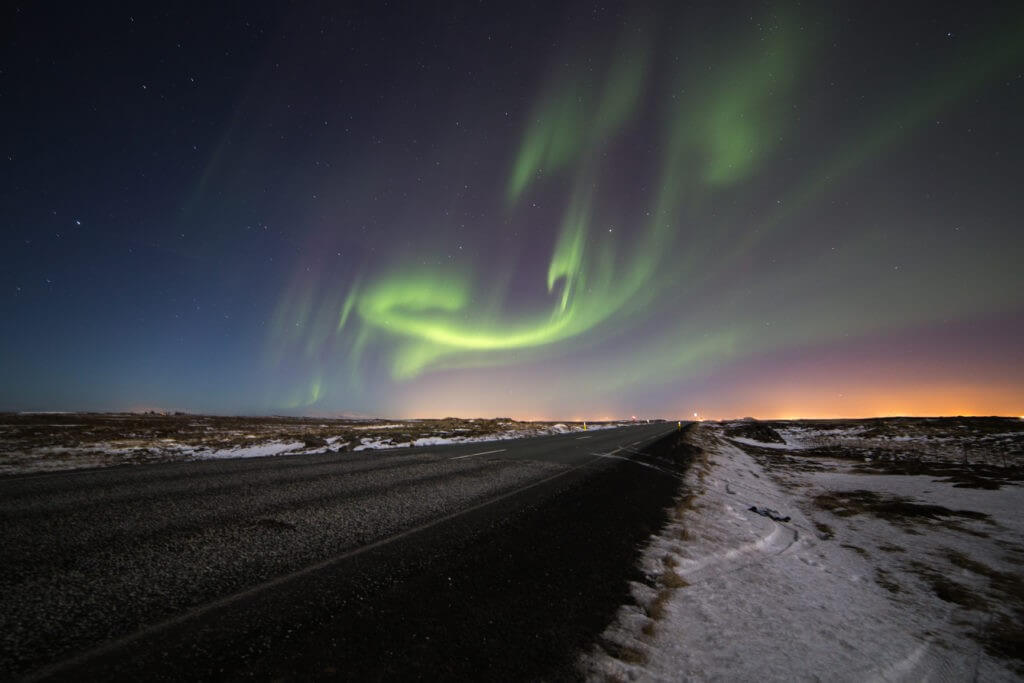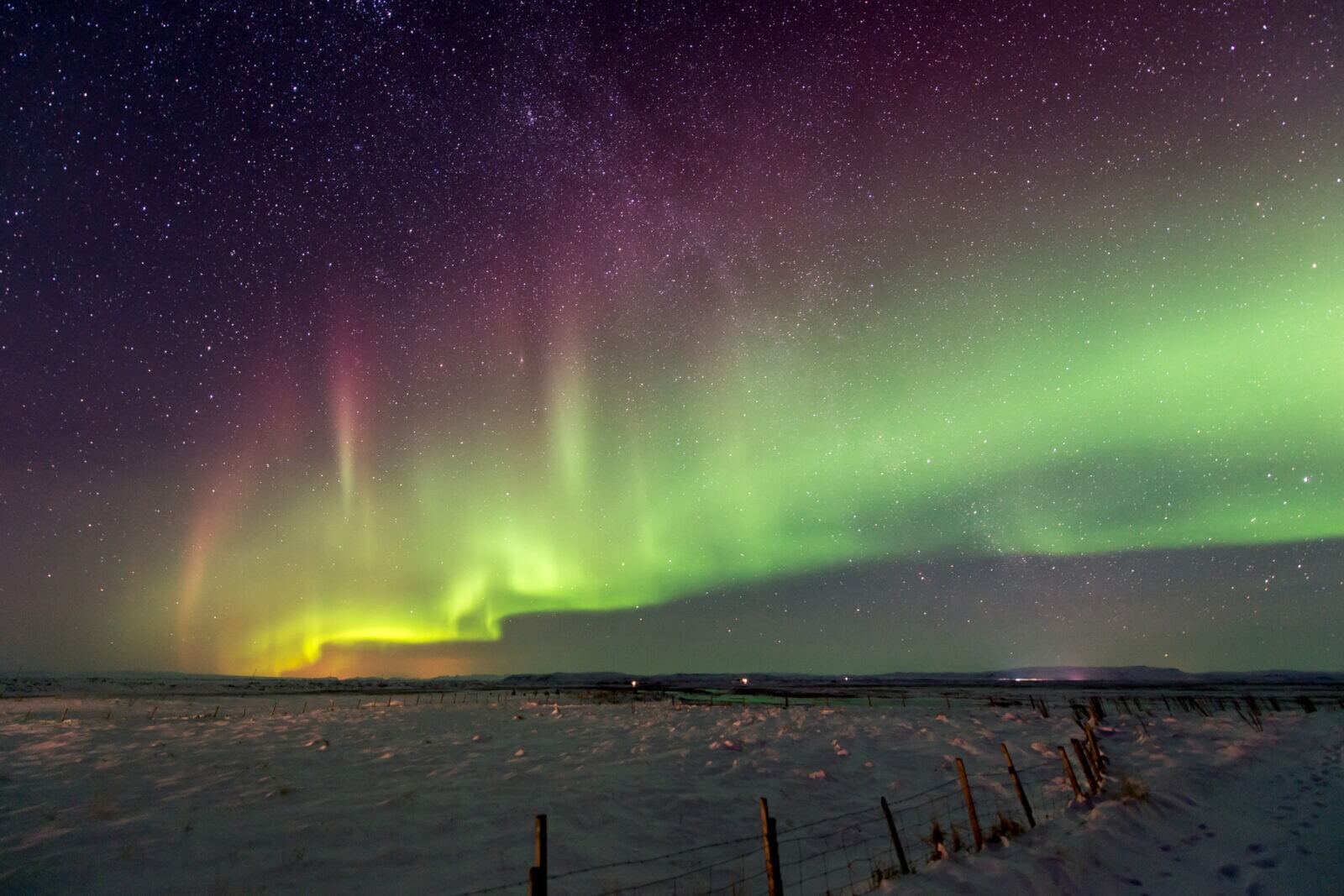Often we’re asked about the best time to see the Northern Lights in Iceland. While actually seeing the lights can be hit or miss depending on terrestrial and solar weather (and a good amount of luck) here’s the 411 on how to catch these elusive lights.
Light and cloud cover are important
Simply put, the best time to see the Northern Lights in Iceland is when there aren’t any clouds, and light pollution from the sun and city is low (aka the middle of the night away from the city). While cloud cover is uncontrollable, places at higher latitudes like Iceland enjoy much longer nights in the winter which allows a longer and darker viewing period for aurora hunters. The ideal time for viewing is in the darkest part of the night, approximately 11p-2a. As for clouds, you’re unlikely to see the Northern Lights during a cloudy night, but just because there are clouds directly overhead doesn’t mean you won’t be able to see the aurora far off from your location where the sky is clearer.
How to view the Northern Lights
On our first trip to Iceland, we learned that often when you can’t see the Northern Lights well with your naked eye, you can in-fact see them through the eyepiece of a camera. What was a faint dancing white and gray aurora with the naked eye became a vibrant mix of blues and greens through the lens of our camera.
While a lot of cameras will pick up the spectrum of light that auroras emit, it’s possible that your camera or phone won’t be capable. It’s best to check with the manufacturer of your camera or phone to know what part of the visual spectrum it’s capable of capturing.

So when is the best time to see Northern Lights in Iceland?
As we’ve outlined above, long nights are important for having the best possibility of seeing the Northern Lights. While it’s possible to see the lights in other seasons (they came out a little bit in April when we were there), the chance of seeing the aurora decreases during other periods.
December
The best time to see the Northern Lights in Iceland is in December. With around 18-19 hours of night skies, chances of catching the lights is much higher. The great part is that the temperature in December isn’t nearly as cold (on average) as January, February, and March. You’ll still want to dress warmly though. With temperatures between 30F – 39F it’ll definitely be bone-chilling weather.
Winter lights
Other parts of the winter in Iceland can be awesome for aurora viewing, but might have other less accommodating conditions. For instance, in January, the temperature in Iceland can be between 27F – 37F. And in November, the temp can be a bit warmer (32F – 41F) but the nights are a bit shorter (so less darkness for aurora viewing).
The warmer season
The warm season isn’t the best time to see Northern Lights in Iceland, but it is a great time to see other things like waterfalls, lush landscapes, and incredible volcanic vistas. There’s always a possibility to see the lights during warmer months, but the lack of long nights makes it a bit less likely.
Overall, if you’re headed to Iceland to see the Northern Lights, it’s always best to make aurora hunting the secondary goal. The beauty, culture, and food scene all make Iceland an incredible place to visit any time of the year, and an aurora here or there is simply the icing on the cake!
Header photo by Cameron Pickett

